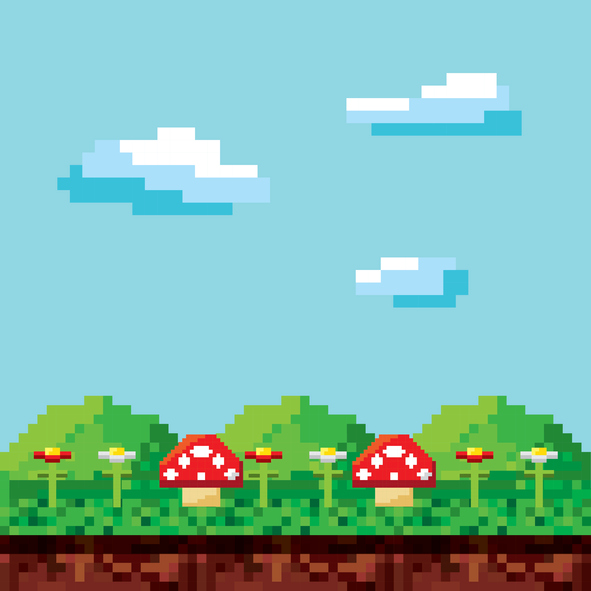B2B Marketing Lessons from Mario and Luigi
- Video game concepts and techniques applied in non-game contexts increase reach, engagement, compliance, loyalty and advocacy
- B2B marketers can use video game dynamics to enhance demand creation programs, customer experience, sales enablement, learning and development
- Gaming principles can be integrated into delivery mechanisms such as the Web site, events, user communities and social media and internal processes like reporting, dashboards and sales enablement
“You have died of dysentery.” Infamous words from the old computer game “Oregon Trail.” They played in my head as a demand creation marketer – in my boss’s voice – when the marketing dashboard started trending red for cost per lead or to indicate conversion rates below forecast for a campaign.

“Hadouken!” This fighting move from the classic video game “Street Fighter” came to mind when a solid content asset filled the top of the funnel and directly influenced the stage progression of leads already in the pipeline.
To understand the behaviors that lead to the accomplishment of a task or end goal, B2B marketers can apply the concepts of video game dynamics and human motivation to enhance demand creation programs and customer experience. These concepts can also be applied to individuals’ activities to drive activity completion, compliance, and excellence in sales enablement and execution.
Some gaming concepts and techniques to consider in demand creation and sales enablement program design include:
- Personalized and customized user experience
- Clearing goals and a path toward completing them
- Awarding points for completion of challenges
- Providing visuals such as a dashboard or roadmap to track progress toward goals
- Interactive discovery and guidance
- Creating community through social connections, engagement opportunities and user-generated content
Gaming Concepts and Techniques in Context
Many B2B marketing activities and tactics parallel the mechanics of video games, whether internal (e.g. reporting, optimization, incentives) or customer-facing (e.g. triggered emails, social engagement, personalization). This activity is captured and measured on interactive dashboards that can be used to challenge or incentivize “players” and track progress on each journey, whether the mission is to increase response rates at the campaign or tactic level, accelerate pipeline through sales enablement, or drive engagement in a new customer community.
The application of game mechanics and behavior-based design in non-game contexts can help increase reach, engagement, compliance, loyalty and advocacy. Goals are set, and behavior-based rules and logic determine the individual journey and user experience.
Enhancing digital tactics and marketing campaign delivery mechanisms with gaming techniques is straightforward because of the action-oriented nature of digital. Digital tactics and delivery mechanisms are well-suited for exploration through the gaming lens. Actions, responses and behaviors are captured in real time and used to trigger the next event, providing real-time feedback to marketers on activity, conversion rates and lead status.
These basic gaming principles may be integrated into the Web site, content assets, landing pages, post-conversion experiences, events (online or offline), user communities, mobile apps, social media tactics, offer redemption and customer loyalty programs. Consider setting, theme, storyline, characters, pacing, flow and output.
What Gamification Can Teach Us About Motivation
Elements of gaming may be leveraged in support of a buyer-centric approach to user experience, focused on what motivates the individual buyer. The goal isn’t necessarily fun or entertainment, but rather a behavior-based approach to motivate participants to complete the next action, whether within the context of a demand creation program, customer experience, internal onboarding or enablement initiative.
People do things for different reasons. Because the idea of gamification is fundamentally based on leveraging behaviors, the experience design should drive interaction and progression by leveraging core motivators. These motivators include one or more of the following:
- Result-focused. Points, status, accomplishment, reward
- Experience-focused. Positive user experience, empowerment, competition, social influence
Lifestyle apps and games combine results and experience to motivate users. The key to applying these concepts and techniques effectively is to know and empower your audience on an individual journey specific to their goals and driven by behavior. An individual may accelerate through the ideal conversion path like a Mario (of Super Mario Brothers fame), or meander thoughtfully like Mario’s brother Luigi, with lower frequency interactions, but gaming techniques motivate both along their journeys.
To learn more about these concepts, join my colleague Nancy Maluso and me for our presentation “Applying Video Game Concepts to Maximize Selling” at SiriusDecisions 2017 Technology Exchange at The Fairmont in Austin from October 30 through November 1.
